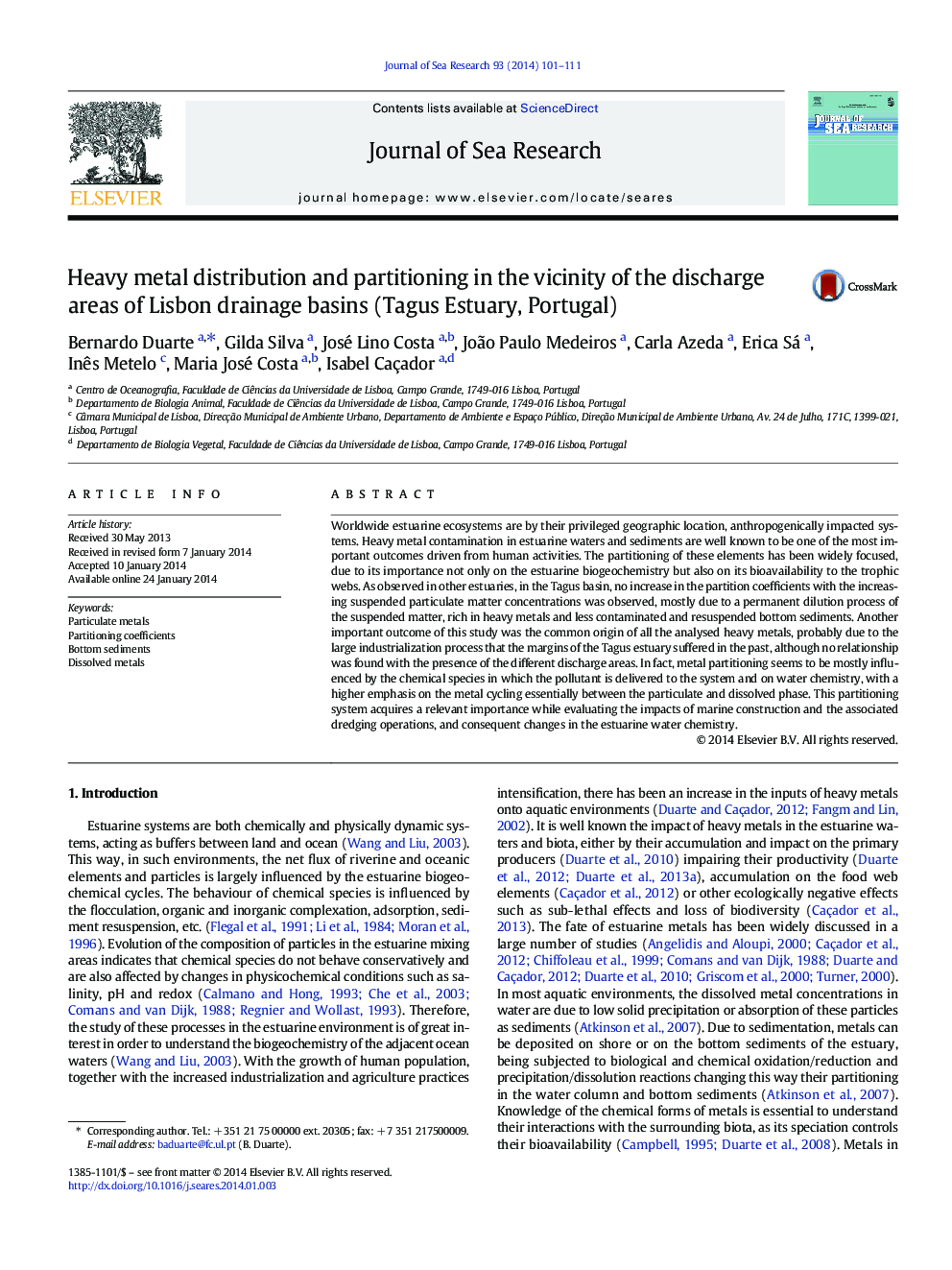| Article ID | Journal | Published Year | Pages | File Type |
|---|---|---|---|---|
| 4549712 | Journal of Sea Research | 2014 | 11 Pages |
•Heavy metal partitioning in estuaries has a very relevant biogeochemical role.•In Tagus basin, there could not be observed a particle concentration effect.•All metals share a common and probably industrial origin.•No relation was found between metal concentrations and the presence of discharge areas.•Metal partitioning is influenced by the chemical form reaching the system and water chemistry.
Worldwide estuarine ecosystems are by their privileged geographic location, anthropogenically impacted systems. Heavy metal contamination in estuarine waters and sediments are well known to be one of the most important outcomes driven from human activities. The partitioning of these elements has been widely focused, due to its importance not only on the estuarine biogeochemistry but also on its bioavailability to the trophic webs. As observed in other estuaries, in the Tagus basin, no increase in the partition coefficients with the increasing suspended particulate matter concentrations was observed, mostly due to a permanent dilution process of the suspended matter, rich in heavy metals and less contaminated and resuspended bottom sediments. Another important outcome of this study was the common origin of all the analysed heavy metals, probably due to the large industrialization process that the margins of the Tagus estuary suffered in the past, although no relationship was found with the presence of the different discharge areas. In fact, metal partitioning seems to be mostly influenced by the chemical species in which the pollutant is delivered to the system and on water chemistry, with a higher emphasis on the metal cycling essentially between the particulate and dissolved phase. This partitioning system acquires a relevant importance while evaluating the impacts of marine construction and the associated dredging operations, and consequent changes in the estuarine water chemistry.
